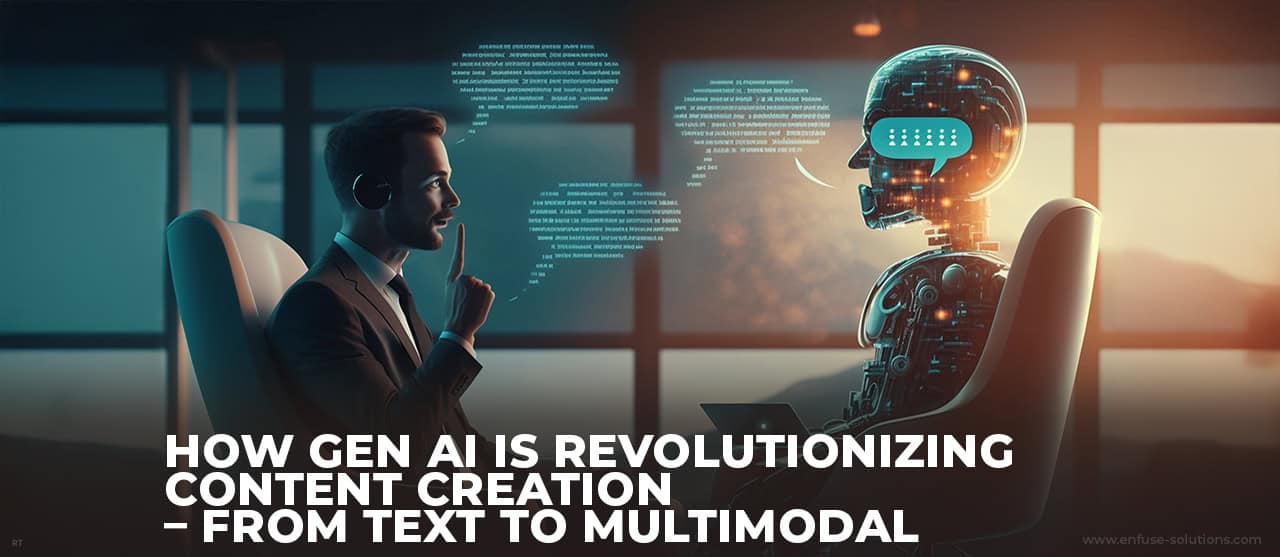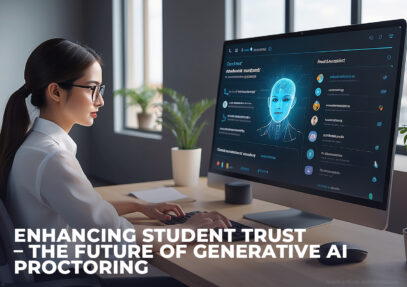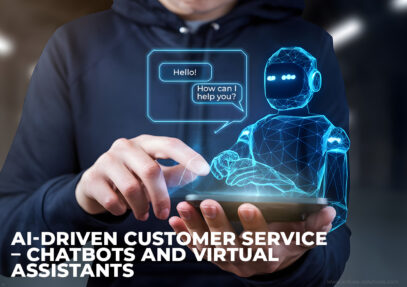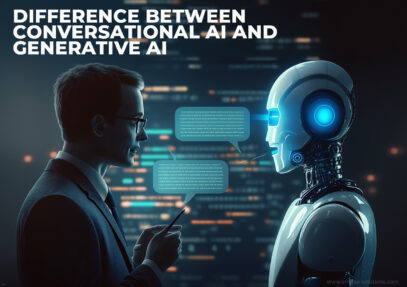
In recent years, the role of artificial intelligence in content creation has grown exponentially, largely due to advancements in generative AI. Once confined to niche applications like predictive text or basic grammar suggestions, generative AI has evolved into a powerful tool for creating high-quality, complex, and diverse content across multiple formats.
This blog delves into how generative AI is revolutionizing content creation, with a focus on its expansion from text generation to multimodal capabilities, and its profound impact on industries worldwide.
The Evolution Of Generative AI In Content Creation
The concept of generative AI revolves around algorithms capable of producing content autonomously, often leveraging large datasets. Early generative AI tools, like predictive text and basic chatbots, focused predominantly on textual content. However, the advent of more advanced models, such as OpenAI’s GPT-3 and GPT-4, has introduced transformative possibilities in content generation.
Today, these models can not only generate human-like text but also respond to specific prompts, refine their outputs, and even emulate various writing styles. For instance, companies can now create blogs, product descriptions, and marketing materials at scale without sacrificing quality or creativity.
The efficiency gains are significant; according to a report by MarketsandMarkets, the worldwide AI market is expected to grow from $214.6 billion in 2024 to $1,339.1 billion by 2030, with a Compound Annual Growth Rate (CAGR) of 35.7%. This illustrates the widespread adoption of AI in content-related tasks.
Text-Based Content Creation: The Rise Of Automated Writing
Initially, generative AI made headlines by revolutionizing text-based content creation. AI-powered tools like ChatGPT and Jasper artificial intelligence now enable businesses to automate blog posts, product descriptions, press releases, and more, with little human intervention. These tools create extremely relevant, contextual content that imitates human writing styles by analyzing input cues. Here’s how it’s reshaping the process:
1. Speed And Efficiency: Generative AI significantly accelerates content production. With natural language processing (NLP) models like OpenAI’s GPT, businesses can create large volumes of high-quality text-based content in a fraction of the time.
2. Personalization At Scale: Personalized content has become crucial in driving audience engagement. Generative AI makes it possible to tailor content to individual user preferences. AI-driven personalization improves customer satisfaction by generating relevant, targeted content that resonates with diverse audience segments.
3. SEO Optimization: Generative AI tools are not just for creating content but also optimizing it for search engine optimization (SEO). With built-in SEO features, AI content creators ensure the right keywords, phrases, and structures are implemented to improve ranking on search engine results pages (SERPs). The latest AI models can even predict SEO trends, ensuring content remains relevant and competitive.
4. Language Translation And Localization: Generative AI is breaking language barriers by providing accurate translations and localized content. AI models like DeepL and Google Translate use generative algorithms to create translations that maintain the tone, context, and meaning of the original text. This has opened new doors for businesses to reach global audiences, expanding their content reach without compromising quality.
Multimodal Content Creation: Beyond Text
While AI-generated text has been a game-changer, the real revolution lies in its multimodal capabilities. The shift from text to integrated content that includes images, videos, and even sound marks the next frontier in content creation. Generative AI models like DALL·E and MidJourney are pushing these boundaries, allowing creators to generate visual and interactive content on demand.
1. AI In Visual Content Creation: In today’s digital landscape, visual content is more engaging and shareable than ever. AI models like DALL·E 3, which can create original images from text descriptions, have taken creativity to new heights. Whether it’s for marketing campaigns, product visualization, or social media content, generative AI tools are capable of delivering high-resolution, photorealistic images. This has drastically reduced the need for expensive photo shoots and design work.
According to Brainrules.net, people who see information in a picture will recall 65% of it three days later, compared to 10% for those who hear it. This statistic reinforces the need for businesses to leverage AI to generate visual content that captures attention and drives interaction.
2. Video Generation And Animation: Video content is the future of digital marketing. Generative AI is playing a significant role in automating video content creation. AI-driven platforms like Runway can generate video clips, animations, and deepfakes based on written prompts or existing footage, enabling brands to create video content at scale.
AI-generated videos are used for everything from product explainers and training videos to personalized marketing messages. This technology allows companies to maintain a strong video presence without having to rely on traditional video production processes, which are often time-consuming and costly.
3. Voice And Audio Synthesis: Generative AI is also transforming how audio content is produced. AI tools like Descript and Replica Studios allow users to synthesize human-like voices, making it easier to create podcasts, audiobooks, and voiceovers for marketing videos. With the ability to emulate various tones, accents, and speaking styles, these AI-generated voices are nearly indistinguishable from real human speech.
According to MarketsandMarkets, AI voice generators rose from around $3 billion in 2024 to $20.4 billion by 2030 with an impressive CAGR of 37.1%, driven by the increasing demand for personalized audio experiences and the rise of voice-activated devices like smart speakers. Brands are increasingly using AI-generated audio to create seamless, scalable experiences across multiple touchpoints.
Latest Statistics On Global AI In The Media And Entertainment Market
According to Straits Research, the global AI market for the media and entertainment sector is projected to increase at a compound annual growth rate (CAGR) of 26.12% between 2024 and 2032, from $15.11 billion in 2023 to $121.99 billion by that time.
How Generative AI Improves Efficiency And Creativity
Generative AI’s impact isn’t just in the volume of content it can create; it also enhances creativity. Through machine learning and natural language processing, generative AI models understand context, tone, and nuances in human communication, allowing them to mimic various writing styles.
For instance, content creators no longer need to spend hours crafting a single blog post or designing visuals from scratch. AI tools can assist with ideation by suggesting relevant content, generating headlines, or even crafting entire drafts. With AI tools like Jasper AI, Writesonic, and Copy.ai, the average blog post can be created in minutes, and with the integration of SEO features, these posts are optimized for better rankings.
AI-generated content doesn’t just meet the basic requirements; it often surpasses human-created content in terms of technical optimization. For example, by using AI, companies can ensure that their content is well-optimized for search engines, as these models are adept at keyword analysis and can produce content aligned with SEO best practices.
Natural Language Processing’s (NLP) Necessity For Content Creation
NLP is the foundation of text-based applications of generative AI. By understanding and interpreting human language, NLP allows AI to create content that is contextually relevant and grammatically accurate.
Sentiment analysis is among NLP’s most important innovations. This allows brands to understand how their content will be received by an audience. For example, AI can analyze customer feedback or social media comments to suggest tone adjustments in marketing materials. According to a report by IBM, 65% of customer service leaders expect using generative AI with conversational AI to increase customer satisfaction due to more personalized and relatable content.
Challenges And Ethical Considerations
Despite its numerous advantages, generative AI comes with its own set of challenges, particularly around ethics and intellectual property. Copyright infringement and originality issues emerge as AI-generated content increases. How do we protect intellectual property when AI can recreate works that closely resemble existing content?
Moreover, the question of bias in AI-generated content is still a hot topic. AI models are trained on vast datasets that may contain inherent biases, leading to content that can unintentionally perpetuate stereotypes. Over 75% of consumers are worried about false information coming from artificial intelligence, as per Forbes survey.
EnFuse Solutions: Redefining AI Implementation
At EnFuse Solutions, we harness generative AI to streamline content creation, delivering high-quality, SEO-optimized text, visuals, and multimedia assets. Our AI-driven solutions enhance productivity and creativity across industries like e-commerce, marketing, and entertainment, helping businesses stay competitive. With multimodal AI capabilities, we ensure your content is optimized for engagement and performance on search engines and digital platforms.
Conclusion: A New Era Of Content Creation
Generative AI is not just a trend; it’s a revolution that’s reshaping how content is created, distributed, and consumed. From text to multimodal capabilities, AI is enhancing both the efficiency and creativity of content creation across industries. With rapid advancements, we can expect even more sophisticated AI models capable of generating interactive and immersive content soon.
However, as AI becomes more integrated into content strategies, businesses must also navigate the challenges, ensuring ethical practices and maintaining the integrity of their brand voice. Those who succeed will not only streamline their content creation process but also gain a competitive edge in an increasingly AI-driven world. Generative AI is here to stay, and it’s revolutionizing content creation—one text, image, and video at a time.

















Comment